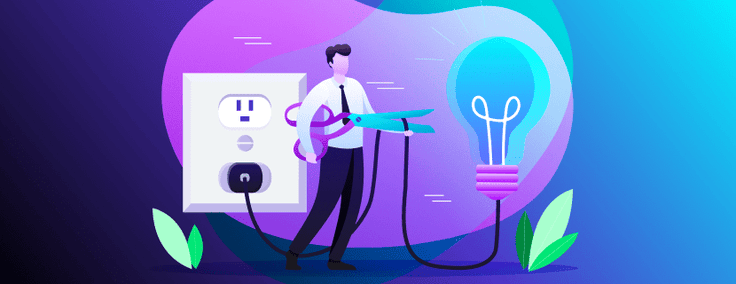
We all know it’s important to conserve energy. Today in the U.S., we’re reminded of that because it’s National Cut your Energy Costs Day.
Depending on where you live in the world, your own habits and cultural forces, this may be easier or harder. You might expect industrialized countries to have the highest per capita consumption rates. In the United States, the national average electricity consumption per capita is about 1,000 kWh/month. In Canada, it’s around 1200 kWh/month. When compared to countries like France and Germany where the per capita average is closer to 500kWh, this sounds exorbitant.
But if frugality is part of the national identity and there’s a gas shortage, reducing your energy consumption could even be a fun competition. In Germany, the cuts in natural gas flowing from Russia have become a personal energy challenge that residents have taken up. Citizens are competing to see who can keep the heat off the longest, cheerfully sharing results on social media.
German towns are reducing energy use through various methods like dimming street lights, lowering temperatures in public buildings and turning off hot water in public washrooms. It’s estimated that Germans have managed to reduce gas consumption by about a quarter using these methods.
Simply being more aware of your energy consumption can help you reduce energy consumption. In one study, economists demonstrated that the “learning effect” created by having an in-home display with real-time data about your energy use helps reduce energy use in the short term. Smart plugs and home energy monitors provide real-time information to your smartphone to help you identify where those energy vampires are.
Smart thermostats, like an Ecobee or Nest, help you proactively control and reduce your energy consumption. But when energy use can’t be avoided, it often can be time shifted.
In the United States, many utilities have introduced programs that encourage their customers to use electricity during off-peak hours. The programs pass on the savings to customers through rebates or reduced electricity rates. On a larger scale, utilities have also digitized their gas and electric distribution networks over the years using Advanced Meter Infrastructure (AMI) to gain operational visibility on energy use, leakage and even fraud.
SingleStore has helped utilities perform more accurate energy grid volume predictions with proactive grid maintenance to reduce costs and deliver better customer service — as well as through IoT analytics that perform continuous analysis. And regarding those massive cloud datacenters we all depend on, I previously wrote about the energy reduction and sustainability measures being put in place.
Reducing energy at the personal level in your home is helpful and necessary, but is not sufficient for the actions needed to be taken for energy reduction and sustainability. Corporations, research institutions and governments around the world are introducing innovations using real-time data to reduce energy use and practice sustainability. The upcoming World Economic Forum meeting this month has sustainability on the agenda, and that organization has been highlighting several remarkable examples.
Here are some of the notable projects leveraging real-time data for sustainability:
- Topolytics is a data analytics company that makes the world’s waste visible, verifiable and valuable through real-time tracking and geospatial analytics. Its WasteMap® platform generates insights for waste producers, recyclers and governments that enable greater materials recovery and drive operational efficiencies.
- Carbon-neutral jet fuel using sunlight and air could be the future for sustainable aviation fuel. Researchers at ETH Zurich have developed an industrial plant that extracts carbon dioxide (CO2) and water from the air. Solar energy is then used to split these compounds and produce syngas — a mixture of hydrogen and carbon monoxide. This is then further processed to create kerosene and methanol, which can be used as a substitute for traditional fuels.
- Real-time data from mobile applications is being used to determine how well the existing EV charging infrastructure in the U.S. is serving the needs of the population. In this study, sentiment analysis was performed on reviews given on various social platforms by EV users while they were at charging stations.
- Tietoevry is using real-time sustainability data for real-time action. It has established the Sustainability Data Hub to aid their customers in reporting sustainability performance in real time.
Real-time data is helping individuals, companies and governments to reduce energy and put in place sustainability practices. As the use of real-time data grows and becomes more available, ever-increasing demands are placed on it by applications for freshness, completeness, accuracy, granularity, access and analysis.
This creates data intensity and, if not dealt with effectively, results in creating data infrastructure complexity and adds to the cost of operating real-time applications for these sustainability analytics and real-time energy monitoring use cases.
SingleStore CEO Raj Verma recently wrote about how to manage these risks and offered three ways to manage the real-time revolution as part of the upcoming meeting of the World Economic Forum this month.





